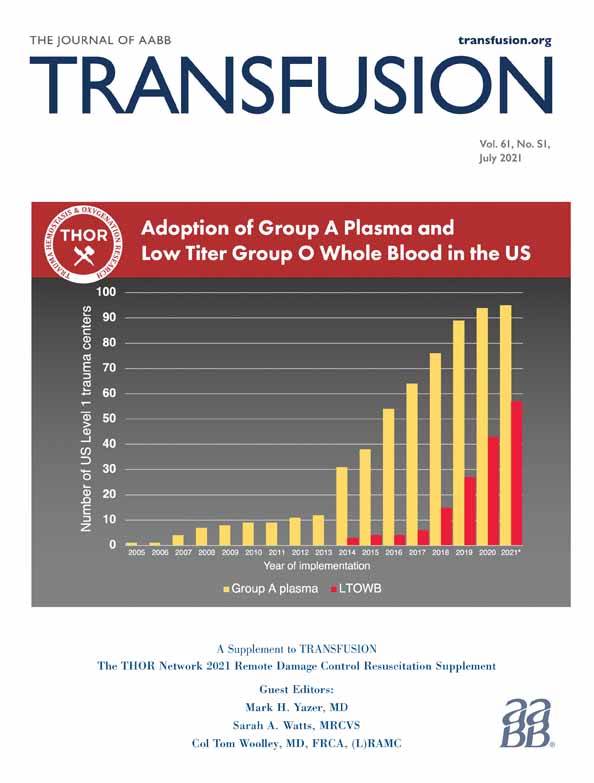Platelet aggregation in whole blood is not impaired by a platelet-sparing leukoreduction filter and instead depends upon the presence of leukocytes
Abstract
Background
Recent studies characterizing in vitro hemostatic properties of whole blood (WB) leukoreduced (LR) with a platelet-sparing filter have described subtle, if any, changes to viscoelastic clotting; however, reductions in platelet (PLT) content and impedance aggregometry (IA) responses have been noted. The effects of filtration of WB (i.e., filter-contact effects, reduction in platelet and leukocyte count) have not been rigorously investigated as to their individual impacts on platelet IA responses.
Study Design and Methods
WB units from healthy donors were collected and characterized to assess the effects of platelet-sparing leukoreduction (LR) upon the in vitro hemostatic measures of platelet IA and thromboelastometry. Further characterization of platelet IA responses was carried out in WB samples to delineate the effects of platelet count and leukocyte presence/absence upon the response.
Results
WB filtration reduced the platelet count and IA responses but had no impact on viscoelastic clotting measures in fresh WB. Experiments revealed that IA responses have a linear correlation with platelet count in both apheresis platelets and WB and that passage of platelets through the WB-LR filter has no impact upon the strength of this response. Further experiments in LR WB showed that addition of autologous leukocytes back to the platelets fully restored the platelet aggregation response to pre-filtration levels.
Conclusion
WB filtration results in platelet count reduction and leukocyte removal; however, platelet IA is not degraded by passage through the filter. Apparent declines in platelet IA responses can be fully attributed to the reduction in platelet count and the removal of leukocytes.
CONFLICT OF INTEREST
All of the authors are current or former employees of Terumo Blood and Cell Technologies, Inc.




